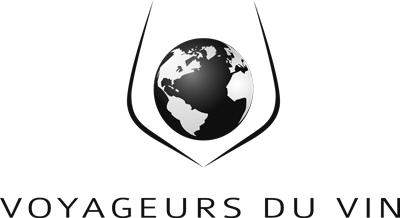History of Castello Banfi
Castello Banfi was established in 1978 by Italian-American brothers John and Harry Mariani, inspired by a profound passion for Italian wine and a dream to create world-class expressions of Sangiovese. They chose Montalcino, a region already rich in history but still emerging on the global fine wine scene, and acquired the medieval Poggio alle Mura castle, transforming it into both a symbol and a research center.
Right from the start, the Marianis embarked on groundbreaking clonal research on Sangiovese in collaboration with renowned enologists and universities. This work aimed to identify the ideal clones for Montalcino's varied soils and climatic conditions, ultimately elevating Brunello di Montalcino to new heights.
In 1984, Castello Banfi released its first Brunello di Montalcino, followed by the prestigious Poggio all'Oro Riserva, confirming its commitment to excellence. Banfi became synonymous with modern winemaking in Tuscany, blending tradition with advanced technology such as the use of hybrid fermenters combining stainless steel and oak (Horizon tanks) to enhance aromatic precision and tannin management.
Over the years, Banfi's relentless pursuit of quality and sustainability earned it multiple awards and global recognition. Today, it remains family-owned, embodying a spirit of hospitality and innovation that has defined the estate for over four decades. Castello Banfi continues to shape the international perception of Tuscan wines, contributing vitally to the prestige of Montalcino.
Region and Vineyards
Castello Banfi is located in the southern part of Montalcino, one of Italy's most celebrated wine regions and a UNESCO World Heritage site. The estate covers approximately 2,830 hectares, of which around 850 hectares are planted with vines. The remaining land is dedicated to olive groves, plum orchards, forests, and cereal crops, reflecting a holistic approach to agriculture and landscape preservation.
The estate's vineyard plots are remarkably diverse, featuring soils ranging from brown clay with calcareous pebbles to sandy and stony structures, which provide excellent drainage and encourage deep root systems. This soil diversity allows Banfi to plant different clones of Sangiovese as well as international varieties in the most suitable micro-terroirs.
The Mediterranean climate, influenced by proximity to the Tyrrhenian Sea and the protective presence of Mount Amiata, ensures abundant sunlight, warm daytime temperatures, and cool nights. This diurnal range helps maintain acidity and aromatic freshness in the grapes. Sustainability is a core principle: Banfi employs integrated pest management, limits chemical inputs, and practices precise canopy and water management. Their respect for terroir and environment defines the singular identity of their wines, making each bottling a true expression of Montalcino's diverse landscape.
Wine Range of Castello Banfi
Castello Banfi offers a rich and diverse portfolio that highlights both traditional Tuscan expressions and innovative interpretations. The flagship wines are the Brunello di Montalcino bottlings, including the Poggio all'Oro Riserva, crafted only in exceptional vintages, and the single-vineyard Poggio alle Mura, known for its refined elegance and power. The classic Brunello di Montalcino and the approachable Rosso di Montalcino represent the core of the estate's commitment to Sangiovese.
Among the Super Tuscans, Summus is a unique blend of Sangiovese, Cabernet Sauvignon, and Syrah, showcasing depth and international flair, while Excelsus focuses on Bordeaux varieties, offering a rich and concentrated style. Banfi also produces varietal expressions such as Cum Laude, a complex blend of Merlot, Cabernet Sauvignon, Sangiovese, and Syrah, reflecting the estate's experimental spirit.
The estate's white wines include the popular San Angelo Pinot Grigio, grown on high-elevation sites to preserve freshness, and La Pettegola Vermentino, known for its aromatic intensity and crisp minerality. Banfi further complements its range with sparkling wines like Cuvée Aurora Rosé, and sweet wines such as Florus Moscadello di Montalcino, which pay homage to local traditions.
Each label embodies Banfi's dedication to meticulous craftsmanship, sustainability, and the authentic soul of Tuscany, appealing to both connoisseurs and casual enthusiasts.
Did you know?
Castello Banfi was the first winery in the world to achieve dual ISO certifications: ISO 14001 for environmental management and SA 8000 for social accountability, reinforcing its commitment to ethical practices and sustainability long before these became global benchmarks.
